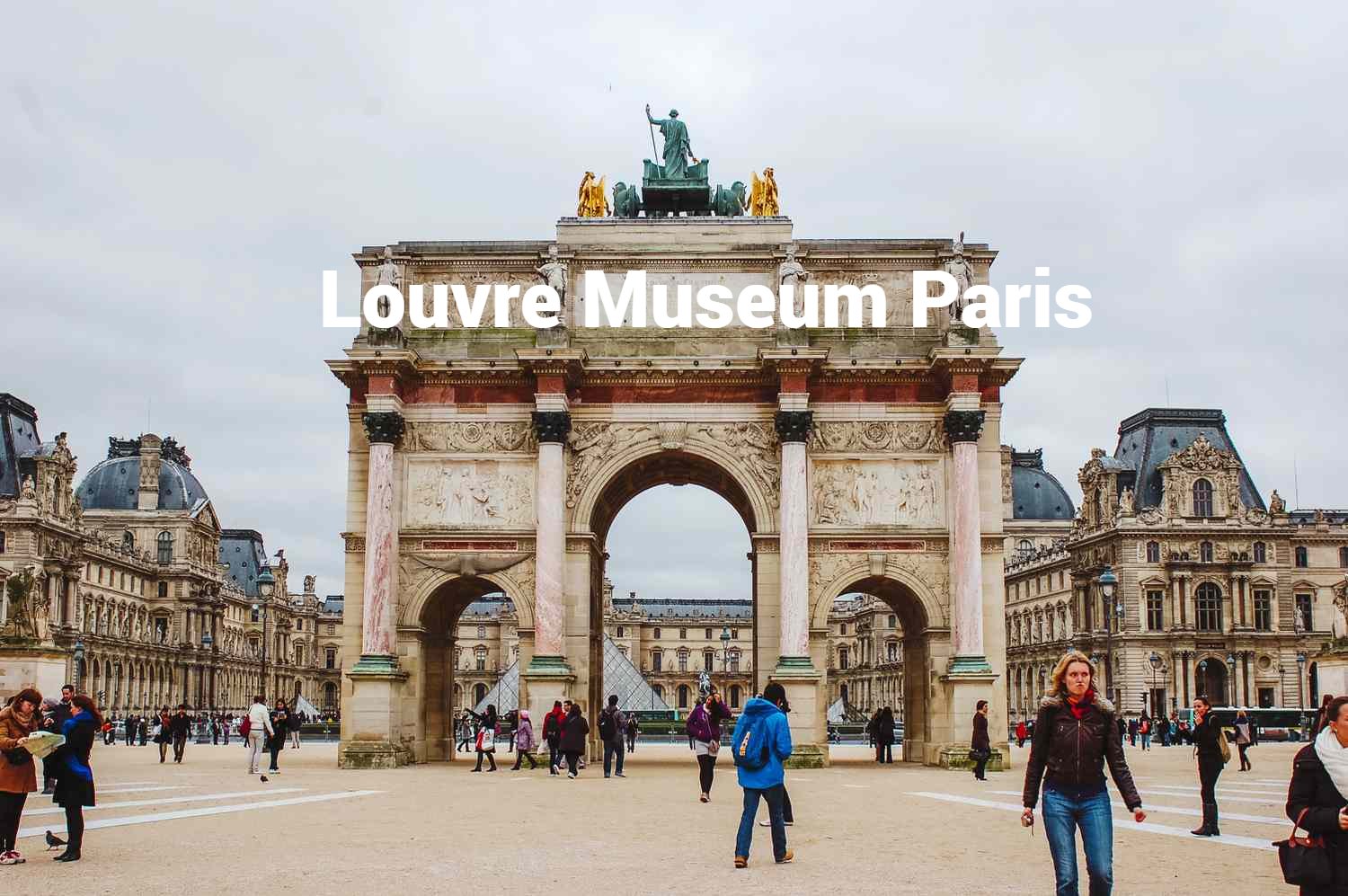Table of Contents
ToggleLouvre Museum Paris 2025 Art Masterpieces, Tickets & Visitor Guide
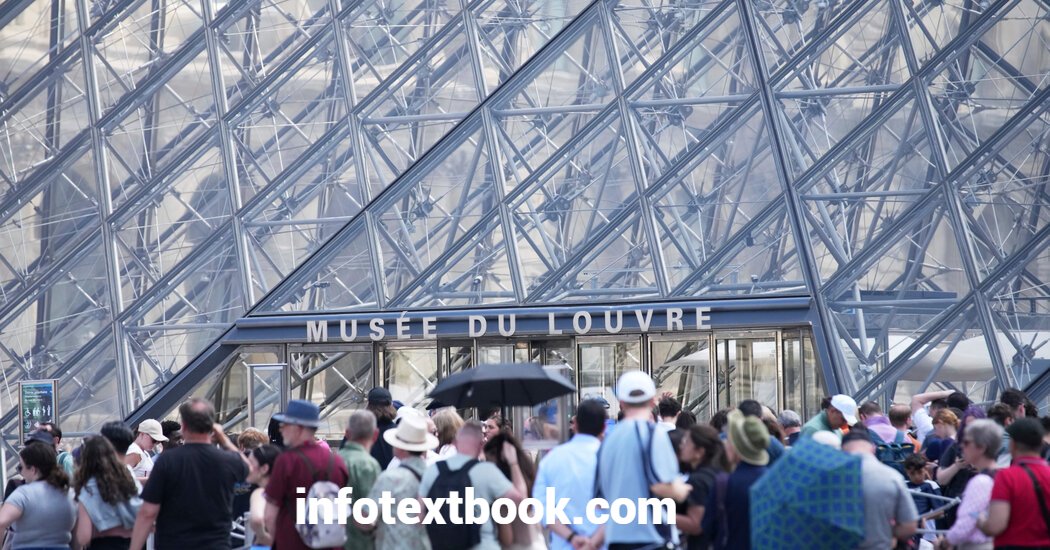
Introduction to the Louvre Museum
The Louvre Museum in Paris is the world’s most visited museum and a symbol of art, culture, and history. Located along the Seine River, it attracts millions of travelers every year. In 2025, the Louvre continues to captivate visitors with its timeless masterpieces, modern exhibitions, and immersive experiences that blend the old with the new. Whether you’re an art enthusiast or a first-time traveler, the Louvre is an essential stop in any Paris itinerary.
History and Significance
Originally built as a medieval fortress in the late 12th century, the Louvre Museum transformed into a royal palace before becoming a public museum in 1793. Today, it houses more than 35,000 works of art, spanning centuries and civilizations. The glass pyramid at the entrance, designed by I.M. Pei, has become a modern icon of Paris, blending innovation with tradition. The museum not only reflects French heritage but also represents global art and culture.
World Famous Art Masterpieces
The Louvre Museum is home to some of the world’s most celebrated masterpieces, making it the crown jewel of Paris tourism. Highlights include Leonardo da Vinci’s Mona Lisa, Eugène Delacroix’s Liberty Leading the People, and the Venus de Milo. The museum also displays Egyptian antiquities, Islamic art, Renaissance paintings, and sculptures from across the globe. Visitors can explore collections that represent over 9,000 years of human history.
Ticket Information and Visiting Hours
In 2025, tickets to the Louvre Museum can be purchased online in advance to skip long queues. General admission typically includes access to both permanent and temporary exhibitions. The museum is open daily, except Tuesdays, with extended evening hours on certain days. For the best experience, early mornings or late afternoons are ideal times to visit. Special discounts are available for students, children, and EU residents under 26 years of age.
Best Tips for Visiting the Louvre Museum
Plan Ahead: Choose your must-see works of art since the museum is vast and can be overwhelming.
Use the Museum Map: Available at the entrance, it helps navigate the galleries efficiently.
Consider a Guided Tour: Expert-led tours provide deeper insights into iconic masterpieces.
Arrive Early: Beat the crowds for popular artworks like the Mona Lisa.
Wear Comfortable Shoes: The museum spans over 72,000 square meters of gallery space.
Nearby Attractions to Explore
After exploring the Louvre, visitors can enjoy nearby attractions such as the Tuileries Garden, Musée d’Orsay, and the Seine River cruises. The museum’s central location makes it easy to combine with other Parisian landmarks, including Notre-Dame Cathedral and the Champs-Élysées.
Introduction to the Louvre Museum
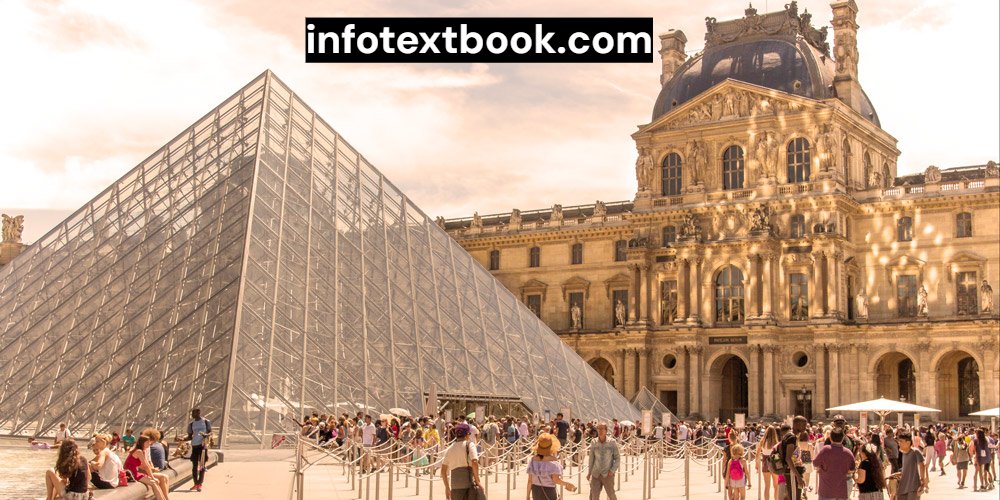
Introduction to the Louvre Museum
The Louvre Museum in Paris stands as one of the most iconic cultural institutions in the world, welcoming millions of visitors each year. Renowned for its vast collection of art, history, and culture, the museum has become a must-visit destination for travelers seeking to explore human creativity across centuries. Situated on the right bank of the Seine River, the Louvre embodies the essence of Parisian charm while holding treasures from civilizations that shaped global heritage.
Originally built as a fortress in the 12th century by King Philip II, the Louvre evolved into a royal palace before being transformed into a public museum in 1793 during the French Revolution. Over the centuries, it has expanded into the largest art museum globally, with over 35,000 works on display. Its collection spans from ancient Egyptian antiquities to Renaissance masterpieces, offering visitors a journey through more than 9,000 years of history.
The Louvre is not just about art—it is also about architecture and innovation. The glass pyramid designed by architect I.M. Pei has become an international symbol of Paris, blending modern design with classical heritage. Visitors are often struck by the contrast between the historic palace and the contemporary pyramid that serves as the museum’s entrance.
For art enthusiasts, the museum’s highlights are unparalleled. The Mona Lisa by Leonardo da Vinci remains the star attraction, drawing millions of admirers each year. Other must sees include the Venus de Milo, Winged Victory of Samothrace, and Delacroix’s Liberty Leading the People. These works represent only a fraction of the museum’s treasures, which include Islamic art, African antiquities, sculptures, decorative arts, and paintings from across the globe.
In 2025, the Louvre Museum continues to reinvent itself, offering digital guides, interactive exhibitions, and multilingual resources that make it accessible to a global audience. Whether you are an art student, a history lover, or simply a curious traveler, the museum promises an enriching experience that goes beyond sightseeing. Each visit offers something new, ensuring that no two trips are ever the same.
The Louvre Museum is more than just a repository of art it is a living testament to the evolution of human civilization, creativity, and culture. Visiting this landmark is not only about admiring masterpieces but also about connecting with the timeless stories they tell.
History and Significance

History and Significance
The Louvre Museum is not only the most visited museum in the world but also one of the greatest symbols of human civilization’s artistic and cultural journey. Its story begins in the late 12th century when King Philip II ordered the construction of a fortress to protect Paris from invasions. Remnants of this medieval fortress are still visible in the museum’s lower levels, offering a fascinating glimpse into the origins of this global landmark.
In the 16th century, the fortress was transformed into a royal palace under King Francis I, who laid the foundation for the museum’s art collection. It was during his reign that Leonardo da Vinci’s Mona Lisa became part of France’s treasured holdings. Over the following centuries, the Louvre continued to expand as successive monarchs, particularly Louis XIV, enriched its collections with priceless artworks and sculptures. However, when Louis XIV moved the royal court to Versailles, the Louvre was left primarily as a space for scholars and artists.
The French Revolution marked a turning point in the Louvre’s history. In 1793, the palace was officially converted into a public museum, showcasing 537 paintings for citizens of France. This act symbolized a new era where art was no longer reserved for royalty but made accessible to all. Over the years, the museum’s collections grew through acquisitions, donations, and discoveries, evolving into the vast treasure trove it is today.
The Louvre Museum’s architectural journey is equally significant. Its most famous modern addition, the glass pyramid designed by I.M. Pei in 1989, sparked controversy initially but has since become a beloved icon. The pyramid symbolizes the blending of history and modernity, a theme that defines the museum’s global image.
Today, the Louvre Museum is home to more than 35,000 works of art, spanning over 9,000 years of human history from Mesopotamian antiquities to Renaissance masterpieces and Islamic art. It is not merely a museum but a cultural epicenter that embodies the universal value of creativity, history, and knowledge. Its role in promoting global art and education makes it a timeless symbol of human achievement and one of Paris’s greatest treasures.
Ticket Information and Visiting Hours
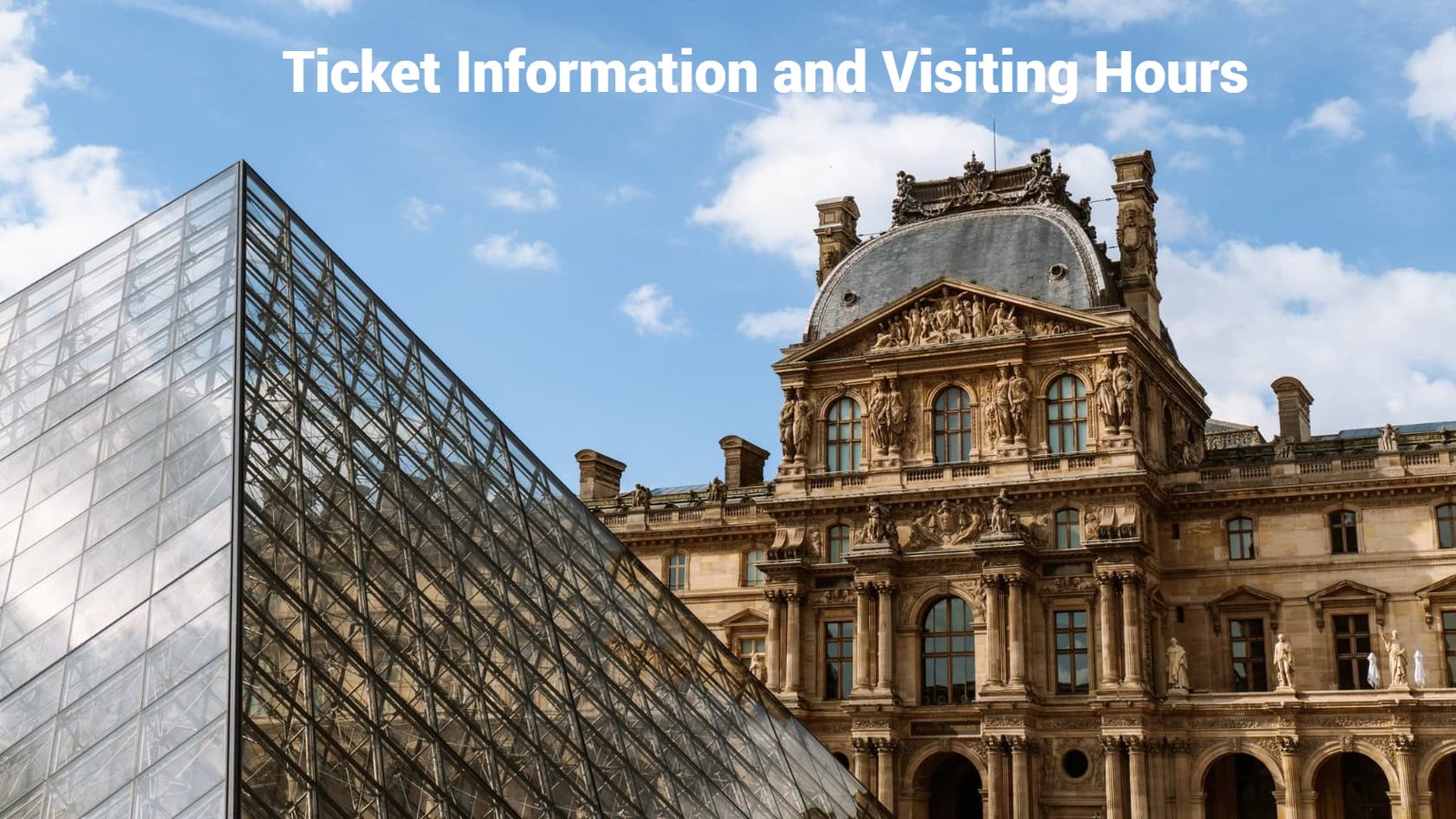
Ticket Information and Visiting Hours
Planning ahead is essential when visiting the Louvre Museum in Paris, as it remains one of the busiest attractions in the world. With millions of visitors each year, securing tickets in advance is highly recommended, especially during peak seasons such as summer and holidays.
Ticket Options and Prices
The standard ticket for the Louvre Museum in 2025 grants access to both permanent collections and temporary exhibitions. Online reservations are the most convenient way to avoid long queues at the entrance. As of 2025, general admission prices typically range from €17–€20, with reduced fares available for students, children, and senior citizens. Additionally, admission is free for EU residents under the age of 26, as well as for children under 18 years. Many travelers also take advantage of special passes, such as the Paris Museum Pass, which includes the Louvre along with other major cultural landmarks across the city.
Opening Hours
The Louvre Museum is open almost every day of the year, except Tuesdays and certain national holidays such as Christmas Day and New Year’s Day. Regular opening hours are from 9:00 AM to 6:00 PM, with extended evening hours until 9:45 PM on Wednesdays and Fridays. These late-night openings provide a calmer, less crowded environment, making it easier to enjoy world famous works like the Mona Lisa or Venus de Milo without the rush of daytime crowds.
Best Time to Visit
To enhance your experience, aim to visit either early in the morning or late in the afternoon. Midday hours tend to be the busiest, especially around iconic masterpieces. Arriving during evening hours on Wednesdays or Fridays allows for a more relaxed pace, with fewer visitors in the galleries. For those who enjoy photography, the evening light around the glass pyramid entrance creates a truly magical atmosphere.
Additional Tips
Always carry a printed or mobile copy of your ticket for smoother entry.
Free admission is offered on the first Saturday of every month from 6 PM to 9:45 PM.
Security checks are mandatory, so factor in extra time before entering.
Lockers are available for storing bags, but large suitcases are not allowed.
Overall, knowing the Louvre Museum ticketing system and operating hours ensures a stress-free and memorable visit, letting you focus on its artistic treasures instead of logistical hassles
Best Tips for Visiting the Louvre Museum
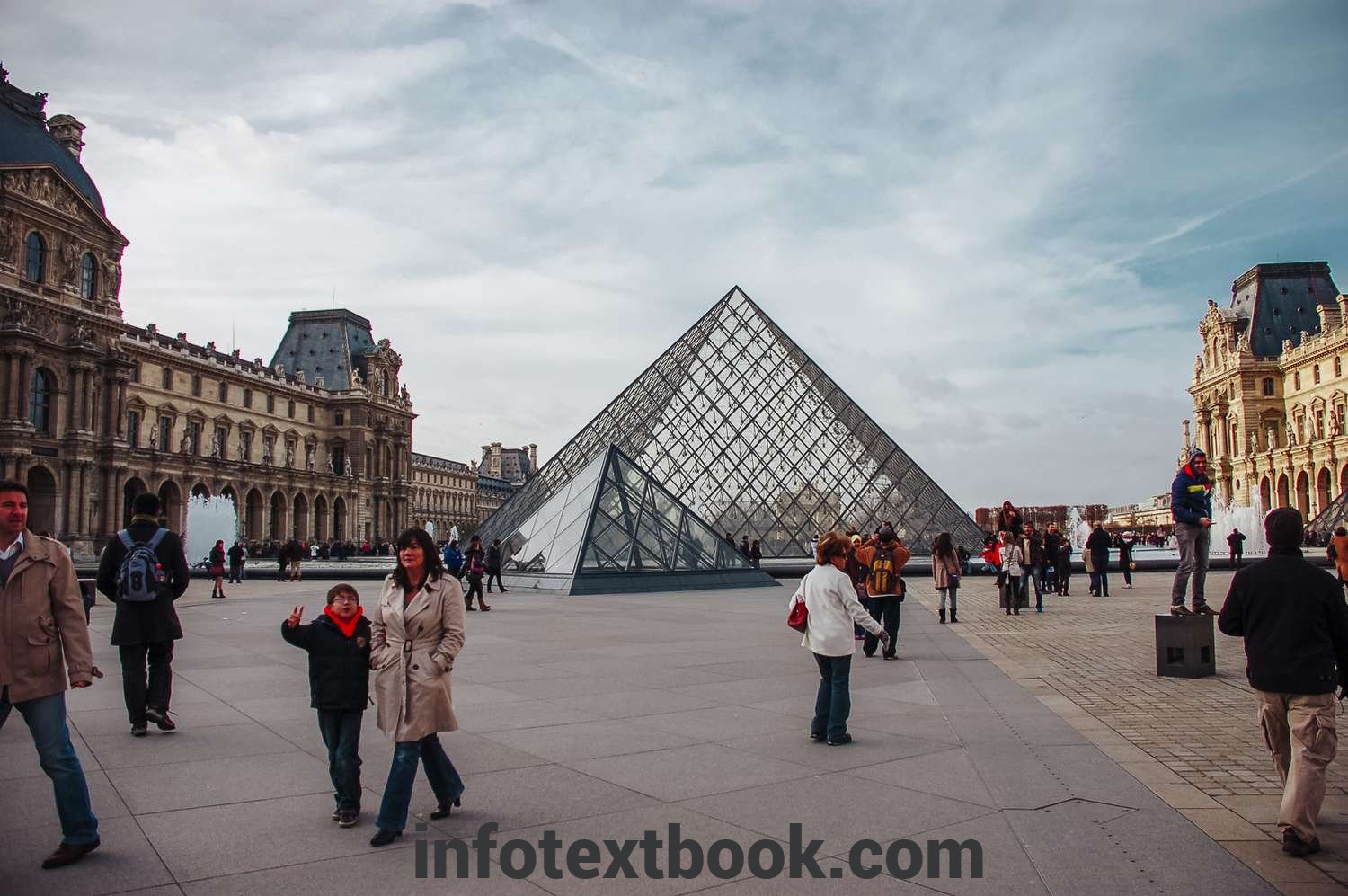
Best Tips for Visiting the Louvre Museum
Exploring the Louvre Museum can be one of the most memorable experiences of your trip to Paris, but due to its size and popularity, it requires some planning. With over 35,000 works of art spread across eight curatorial departments, it is impossible to see everything in one visit. The following tips will help you make the most of your time while enjoying the masterpieces that make the museum legendary.
1. Plan Your Visit in Advance
Before stepping into the Louvre Museum, decide which galleries or collections you want to prioritize. Many visitors come mainly to see the Mona Lisa or Venus de Milo, but the museum also has vast Egyptian, Greek, and Renaissance art sections. Reviewing a map or downloading the official Louvre app will save valuable time.
2. Buy Tickets Online
Queues at the entrance can be long, especially during peak tourist seasons. Purchasing tickets online allows you to skip the general admission line and head straight to security. This is especially useful if you’re visiting with limited time.
3. Arrive Early or Late in the Day
The busiest times at the Louvre are late mornings and early afternoons. Arriving right at opening time or visiting during the extended evening hours on Wednesdays and Fridays can make your experience more relaxed.
4. Use the Pyramid Entrance Strategically
While the glass pyramid entrance is iconic, it is also the most crowded. Alternative entrances such as the Carrousel du Louvre often have shorter lines. Knowing these options can help you save time.
5. Wear Comfortable Shoes
The museum covers more than 72,000 square meters of gallery space. Comfortable footwear is essential if you plan to explore multiple collections without fatigue.
6. Consider a Guided Tour
For a deeper understanding of the Louvre Museum’s masterpieces, guided tours are highly recommended. They provide context and insight into the artworks, which enhances the overall experience.
7. Take Breaks and Enjoy the Surroundings
Don’t rush through the galleries. Take breaks in the museum cafés or step outside to enjoy the Tuileries Garden nearby before continuing your visit.
By planning ahead, arriving at the right time, and knowing insider tips, your trip to the Louvre Museum will be both efficient and unforgettable.
Nearby Attractions to Explore

Nearby Attractions to Explore
When visiting the Louvre Museum, travelers have the perfect opportunity to explore several nearby attractions that showcase the beauty, history, and culture of Paris. Situated in the heart of the city along the Seine River, the Louvre’s central location makes it an ideal starting point for sightseeing.
One of the most popular nearby spots is the Tuileries Garden, located just steps away from the Louvre Museum. This historic garden offers beautifully manicured lawns, elegant fountains, and tree-lined pathways perfect for a relaxing stroll. Visitors can enjoy picturesque views of the Louvre’s glass pyramid while taking in the serene environment. The Tuileries Garden is also home to numerous sculptures and art installations, making it an extension of the museum’s artistic experience.
Another must-visit attraction is the Musée d’Orsay, which lies across the Seine from the Louvre Museum. Housed in a former railway station, this museum is renowned for its impressive collection of Impressionist and Post-Impressionist masterpieces by artists like Monet, Van Gogh, and Renoir. Combining a visit to both the Louvre Museum and Musée d’Orsay allows travelers to experience a wide spectrum of art history, from classical works to modern movements.
For those interested in exploring Paris’s iconic landmarks, a Seine River Cruise is a fantastic option. Departing from nearby docks, these cruises offer stunning views of famous bridges, historic buildings, and monuments. Seeing the Louvre Museum from the river gives a unique perspective of its grandeur and highlights the architectural harmony of the surrounding area. Evening cruises are especially magical, as many landmarks are illuminated, creating a captivating ambiance.
Additionally, the Pont des Arts pedestrian bridge and the Île de la Cité are within walking distance, providing charming photo opportunities and a glimpse of the city’s medieval history. Cafés and bistros nearby offer the chance to enjoy French cuisine while taking in the sights.
Exploring these attractions around the Louvre Museum enriches the overall Paris experience. Travelers can combine art, culture, history, and leisure in a single day, making the visit to this central area both convenient and memorable.
Final Thoughts

Final Thoughts
The Louvre Museum Paris stands as a beacon of art, history, and culture, captivating millions of visitors each year. As the world’s largest museum, it offers an unparalleled collection of masterpieces spanning thousands of years, from ancient civilizations to the Renaissance and beyond. Visiting the Louvre in 2025 is not just about observing art it’s about experiencing the rich cultural heritage of France and the stories that each artwork represents.
From Leonardo da Vinci’s Mona Lisa to the Venus de Milo and countless other treasures, the museum provides insights into human creativity, history, and innovation. Its combination of classical architecture and the modern glass pyramid entrance creates a striking contrast that enhances the visitor experience. Planning your visit in advance, using maps, and opting for guided tours ensures you make the most of this vast cultural treasure.
Beyond the artworks, the Louvre’s central location allows travelers to explore nearby attractions like the Tuileries Garden, Seine River, and Musée d’Orsay, creating a full Parisian experience. Whether you are an art lover, a history enthusiast, or a curious traveler, a visit to the Louvre Museum Paris in 2025 promises an unforgettable journey through time, culture, and creativity that will leave lasting memories.
FAQs on Louvre Museum Paris 2025
Q1. What is the Louvre Museum famous for?
The Louvre Museum is famous for housing world-renowned artworks such as the Mona Lisa, Venus de Milo, and Liberty Leading the People.
Q2. Where is the Louvre Museum located?
It is located in central Paris along the Seine River, near the Palais Royal and Tuileries Garden.
3. What are the opening hours of the Louvre Museum?
The museum is open daily except Tuesdays, typically from 9:00 AM to 6:00 PM, with late-night openings on certain days.
Q4. How much are tickets for the Louvre Museum in 2025?
Ticket prices vary by age and access level. Discounts are available for students, children, and EU residents under 26 years.
Q5. Can I buy tickets online?
Yes, online tickets are recommended to avoid long queues, especially during peak tourist seasons.
Q6. How long does it take to visit the Louvre Museum?
A complete visit may take 3–5 hours, depending on the number of galleries you wish to explore.
Q7. Are guided tours available at the Louvre Museum?
Yes, guided tours provide in-depth information about the masterpieces, architecture, and history of the museum.
Q8. Is the Louvre Museum accessible for people with disabilities?
Yes, the museum offers elevators, ramps, and other facilities to accommodate visitors with disabilities.
Q9. What are the must-see artworks in the Louvre Museum?
Must-see artworks include the Mona Lisa, Venus de Milo, Winged Victory of Samothrace, and works by Raphael, Caravaggio, and Delacroix.
Q10. Are there restaurants and cafes inside the Louvre Museum?
Yes, the museum has several dining options, including cafes and restaurants, where visitors can relax and enjoy a meal.
Q11. Can I take photos inside the Louvre Museum?
Photography is allowed in most areas, but flash and tripods are prohibited to protect the artworks.
Q12. What nearby attractions can I visit after the Louvre Museum?
Nearby attractions include the Tuileries Garden, Musée d’Orsay, Seine River cruises, and the Palais Royal

